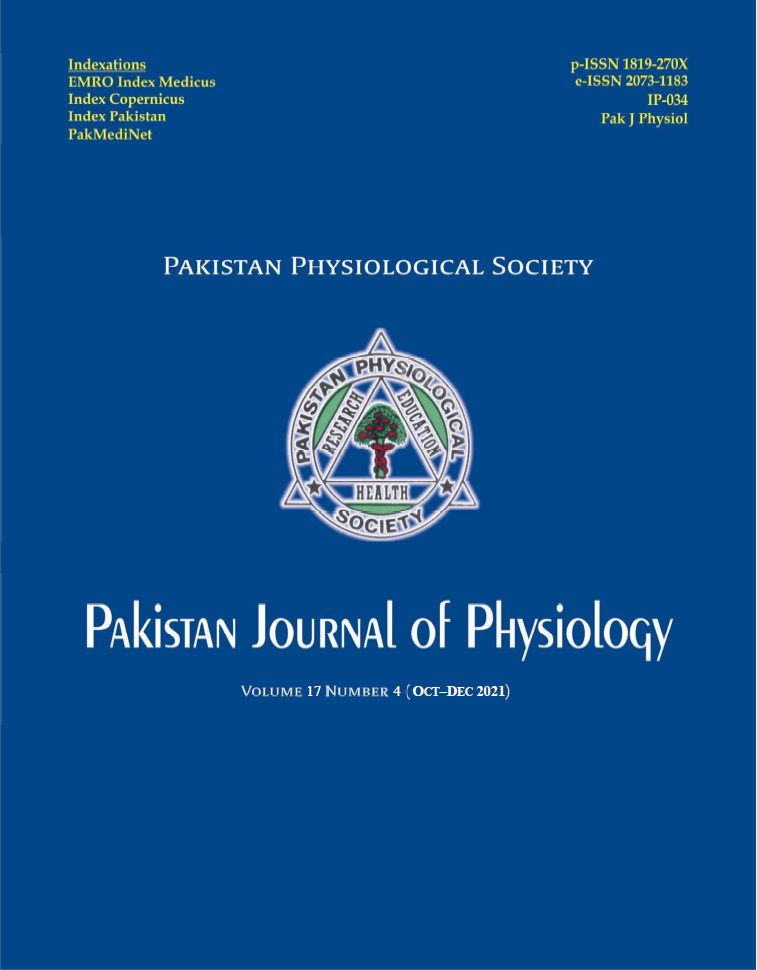COMPARISON OF EFFECTS OF PROBIOTICS AND SITAGLIPTIN ON SERUM GLUCOSE IN DIABETIC RATS
DOI:
https://doi.org/10.69656/pjp.v17i4.1397Keywords:
Probiotics, Diabetes Mellitus, Fasting, Blood GlucoseAbstract
Background: Diabetes mellitus has become a major disease having catastrophic effects on health and economy globally. This study was conducted to determine the role of Probiotics in comparison to Sitagliptin in decreasing serum glucose levels in diabetic rats. Methods: Fifty male rats were divided into two groups: Normal control group-A (n=10) and Experimental group-B (n=40). Group-B was administered Streptozotocin to induce diabetes, which was confirmed after one week by measuring Fasting Blood Glucose (FBG) (>7 mmol/L were considered diabetic). Then group B was subdivided into BI (Diabetic Control), BII (Sitagliptin treated), BIII (Probiotics treated) and BIV (Sitagliptin plus Probiotics treated) with 10 rats each. Baseline serum glucose was measured at day zero. Next sampling was done on day 40, after administering Probiotics (250 mg/Kg) and Sitagliptin (10 mg/Kg). Terminal sampling was done on day 60. Statistical analysis was done on SPSS-21. Comparisons between the groups were analysed using one-way ANOVA (post-hoc Tuckey test), and p<0.05 was considered statistically significant. Results: Rats in Probiotic treated group-BIII had significant reduction in fasting blood glucose levels with efficacy comparable to Sitagliptin in group-BII (p<0.05). Synergistic effect of Sitagliptin plus Probiotics in group-BIV was greater (p<0.05) than their individual effects in groups-BII and BIII. Conclusion: Probiotics significantly decrease fasting blood glucose in diabetic rats with efficacy comparable to Sitagliptin. Synergistic effect of Sitagliptin plus Probiotics is greater than their individual effects.
Pak J Physiol 2021;17(4):27?30
Downloads
Downloads
Published
How to Cite
Issue
Section
License
The author(s) retain the copyrights and allow their publication in Pakistan Journal of Physiology, Pak J Physiol, PJP to be FREE for research and academic purposes. It can be downloaded and stored, printed, presented, projected, cited and quoted with full reference of, and acknowledgement to the author(s) and the PJP. The contents are published with an international CC-BY-ND-4.0 License.












